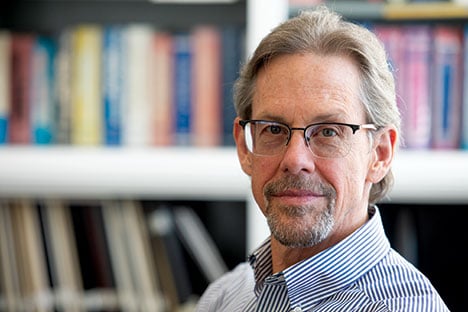CHERP helps Claremont get serious

Claremont based nonprofit Community Home Energy Retrofit Project, or CHERP, will pause next Friday, October 11 to celebrate its latest, most ambitious endeavor:?the launch of the world’s first nonprofit solar panel assembly facility.
The free and open to the public event, from 5:30 to 7:30 p.m. at Pomona College’s Sontag Greek Theater, 300 E. Bonita Ave., Claremont, will include food, music, a silent auction and comments from community leaders.
The party is the culmination of a decade of outreach and education on how improved energy efficiency and renewable energy can reduce greenhouse gas emissions and help to arrest climate change.
It’s also a direct result of California’s 2019-20 budget, signed June 27 by Governor Gavin Newsom, which includes $2.1 million in seed funding for CHERP’s offshoot, Claremont/Pomona Locally Grown Power (CPLGP). That money will be used to build out and staff the new facility, Claremont/Pomona Locally Grown Power Factory, in front of its scheduled June 2020 opening.
“This is our capstone project,” said Devon Hartman, founder and executive director of CHERP and CPLGP. “And now we’ll be rolling out the opportunities for solar power and renewable energy projects to take the rest of the energy down to net zero in the city.”
The manufacturing plant will be located at Pomona Unified School District’s Adult Education facility at 1515 W. Mission Blvd. It will create some 200 “living wage through high level management position” jobs, Mr. Hartman said, with entry level warehouse and installation workers making between $15 and $20 per hour.
Those entry level jobs will include “lots of opportunity for learning and matriculating upward,” Mr. Hartman said. “We’re going to be hiring at-risk youth, out of work adults, veterans, and people on the spectrum to do soldering. We’re wanting the inside of the factory to resemble the community in general in terms of the demographics.”
They’ll also ripple through the local economy and create 500 additional “indirect” jobs as result of the newfound buying power of those workers, Mr. Hartman said.
“This is trickle-up economics at its best,” he said. “This is how you stimulate a local economy, maximally and rapidly, which is you stimulate the people at the lowest income levels first, because they will go out and spend the money.” Time-tested macroeconomic theory indicates those at the lowest economic strata tend to spend freed up cash immediately, and in the local economy, he added.
The first phase goal is to put 6,000 solar systems on the lowest income households in Pomona and Claremont, which will result in $6.5 million in savings each year for the next 30 years, Mr. Hartman said.
“If you imagine 6,000 households paying roughly $80 a month to the utility companies, that’s $6.5 million a year that is leaving our local community and going to a utility outside of our city,” Mr. Hartman said. “The minute we put solar panels on those homes it’s like flipping a switch; the money stops flowing to these utilities and that $80 a month is free, found, disposable personal income for those 6,000 households.”
For the past decade, CHERP has been working toward getting solar power costs down to a level that makes sense for all homeowners, not just high-income individuals.
The breakthrough came from inventor Kent Kernahan, who solved the problem of areas of tremendous heat called “hot spots,” which on previous solar panel designs required complicated and expensive mitigation factors. His design uses simpler materials and fewer parts to achieve dramatically relaxed heat tolerances.
Mr. Kernahan—who holds 74 patents related to solar power and is on CHERP’s board of advisors—went back to Albert Einstein’s original calculations for his “law of photoelectric effect,” for which Mr. Einstein won his only Nobel Prize, in 1922.
“Ever since that time, when solar cells were invented, there’s been a problem in the way the electrons are taken off of a solar cell,” Mr. Hartman explained.
Mr. Kernahan dug into Mr. Einstein’s calculations and discovered if he inversed the relationship between conduction and voltage, he could solve the problem of hot spots in solar panels.
“He went back to the source,” Mr. Hartman said.
The panels will be made up of parts from around the world, using the proprietary, patented architecture that simplifies manufacturing, reduces costs to consumers, and allows the process to be replicated in local factories throughout the United States, thus creating thousands of middle class manufacturing and installation jobs.
“It’s a beautiful way to get solar renewable energy to scale,” Mr. Hartman said. “We know that solar energy is cost effective, but we’ve never been able to get it” affordable for everyone. “And, in order to meet our state’s energy goals of getting to 100 percent renewables by 2045, we have to start installing solar systems on buildings throughout California at an unprecedented rate.”
In an additional bit of good news for US consumers, Mr. Kernahan also ensured his new technology is protected under federal patent law and cannot be monetized overseas. It can only be licensed to local nonprofits inside U.S. city jurisdictions, Mr. Hartman said.
Mr. Hartman hopes the Pomona flagship assembly facility will be the model for others he hopes to roll out across California over the next few years, and later, the rest of the country. The goal is one factory in 2020, three in 2021, and 10 in 2022.
“And then we’re going to take the lid off and see where it goes,” Mr. Hartman said.
First though, CPLGP will be working hard over the next nine months to get its Pomona manufacturing and installation divisions up and running, purchasing equipment, and securing UL approval for its factory and solar panels.
“There’s a lot of exciting things happening and a lot of opportunity for people to get involved,” Mr. Hartman said. “If people are wanting to volunteer to help us, they can send an email to info@cherp.net. We’re signing up volunteers right now.”
For information, go to cherplgp.org.
—Mick Rhodes
mickrhodes@claremont-courier.com










0 Comments